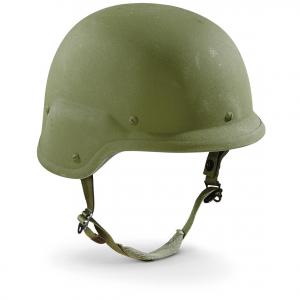PASGT systems helmet (Pre 2000)
Casual:
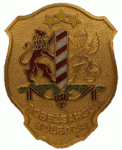
State Border guard college qualification breast mark /Latvian State Border Guard/

Кокарда знак на беретную нашивку 501-го пехотного полка

Patches of international peacekeeping battalion named "Dudayev's"
To change information
Other versions
overview:
Weight: 3.1 lbs (1.41 Kg)
Ballistic coverage: the ears and upper, rear, and sides of the cranium
NIJ level: IIIa (3a) (240-grain .44 magnum)
Designed: 1977
Used: issued mid-1980´s and in current use
Accessory(s): riot face shield and bracket mount for night vision devices
Technical Description:
The PASGT helmet is a light ballistic helmet designed to protect a soldier's head from shrapnel and blunt force trauma. The ¨shell¨ of the helmet consist of 19 layers of kevlar or Aramid fibers suspended in hard phenolic resin the shell is almost always painted olive drab/army green from the factory. The PASGT helmet is most often used with a matte cloth cover. PASGT helmet covers come in almost every camouflage but are most often found in M81 woodland, tri-color DBDU, UCP, black, and snow-white, these covers are put on the helmet and pulling the elastic strap sewn into the edge of the cover down over the edge of the shell and letting the elastic strap contract under the brim. The cover can be secured further by the use of a helmet strap the strap is also known as ¨cats eyes¨ due to the two reflective strips sewn into it. The helmet affixed to the user's head by use of a chin-strap and foam pads affixed to the inside of the shell.
History:
By the late 1960s, the M1 steel helmet or ¨pot¨ helmet used since the beginning of the second world war was rather antiquated and its performance during the war in Vietnam proved that it was time for it to be replaced. The helmet was designed as apart of the PASGT program and was nicknamed the ¨K-pot¨ owing to its kevlar construction. the PASGT helmet served extensively all over the globe and almost every nation on the planet produces or buys it or one of the myriads of clones or copies in production.
Weight: 3.1 lbs (1.41 Kg)
Ballistic coverage: the ears and upper, rear, and sides of the cranium
NIJ level: IIIa (3a) (240-grain .44 magnum)
Designed: 1977
Used: issued mid-1980´s and in current use
Accessory(s): riot face shield and bracket mount for night vision devices
Technical Description:
The PASGT helmet is a light ballistic helmet designed to protect a soldier's head from shrapnel and blunt force trauma. The ¨shell¨ of the helmet consist of 19 layers of kevlar or Aramid fibers suspended in hard phenolic resin the shell is almost always painted olive drab/army green from the factory. The PASGT helmet is most often used with a matte cloth cover. PASGT helmet covers come in almost every camouflage but are most often found in M81 woodland, tri-color DBDU, UCP, black, and snow-white, these covers are put on the helmet and pulling the elastic strap sewn into the edge of the cover down over the edge of the shell and letting the elastic strap contract under the brim. The cover can be secured further by the use of a helmet strap the strap is also known as ¨cats eyes¨ due to the two reflective strips sewn into it. The helmet affixed to the user's head by use of a chin-strap and foam pads affixed to the inside of the shell.
History:
By the late 1960s, the M1 steel helmet or ¨pot¨ helmet used since the beginning of the second world war was rather antiquated and its performance during the war in Vietnam proved that it was time for it to be replaced. The helmet was designed as apart of the PASGT program and was nicknamed the ¨K-pot¨ owing to its kevlar construction. the PASGT helmet served extensively all over the globe and almost every nation on the planet produces or buys it or one of the myriads of clones or copies in production.
Another category of: Helmets
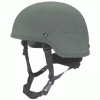 MICH TC 3000 ADVANCED COMBAT HELMET - LEVEL IIIA U.S. Army
MICH TC 3000 ADVANCED COMBAT HELMET - LEVEL IIIA U.S. Army
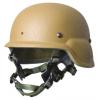 Lightweight Helmet (LWH) U.S. Marine Corps
Lightweight Helmet (LWH) U.S. Marine Corps
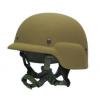 Combat kevlar PSGT Helmet of Ground Troops of United States
Combat kevlar PSGT Helmet of Ground Troops of United States
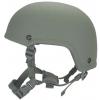 Balistic ARCH High-Cut Helmet USA
Balistic ARCH High-Cut Helmet USA
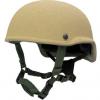 Tactical Ballistic Helmet Side Cut TBH-II™ SC
Tactical Ballistic Helmet Side Cut TBH-II™ SC


